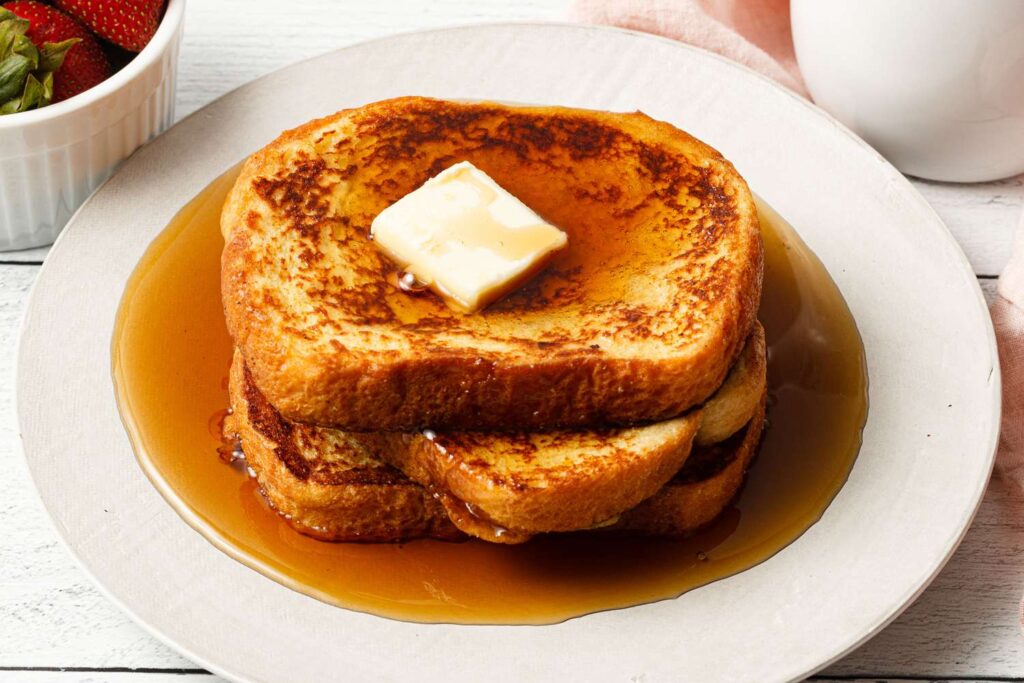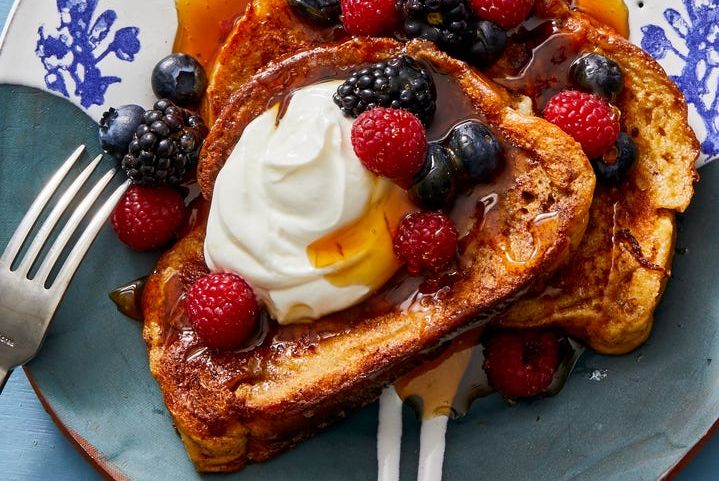Oh, the French toast. Is there anything that tastes quite like that flavorful, warm, fluffy, golden-brown bliss that is drenched with maple syrup? With a reassuring hug in every bite, this breakfast (or brunch, or even dessert!) mainstay transcends time and cultural boundaries. Would you believe, however, that this fairly straightforward meal has a centuries-long history, and that it is anything from “French” in the way it arrived on our plates? Get ready, foodies, because we’re going to go on a delicious journey through the world of French toast!
From Ancient Rome to French Finesse:
The idea of eggy bread has Roman origins, despite the name’s possible French ancestry. The dish known as “panis tostus,” which was fried bread dipped in a mixture of egg and milk, was a favorite among the astute Romans. This simple recipe spread throughout Europe over time, adjusting to local customs and tastes. In the fifteenth century, the dish is adopted by France and given the name “pain perdu,” which translates to “lost bread.” This was a brilliant method to utilize stale bread, demonstrating the inventiveness and delectability of the French. They created the version we know and love today by adding their own delicate touch, using richer brioche bread and flavoring the custard with spices and vanilla.
Across the Atlantic: French Toast Takes America by Storm:
Eventually, French toast crossed the Atlantic and arrived in America in the 17th century. Here, it swiftly gained popularity as a morning dish and was frequently paired with maple syrup, the ultimate American accompaniment. Americans, however, didn’t stop there! They celebrated French toast’s adaptability, making savory variations with cheese, veggies, and herbs. For an autumnal treat, they even included seasonal ingredients like pumpkin puree.

The Art of the Perfect American French Toast:
After learning about the intriguing past of this well-liked meal, let’s explore the techniques for making the ideal French toast in the United States. This recipe will definitely entice your taste buds:
Ingredients:
- 2 thick slices of your favorite bread (brioche, challah, Texas toast – the choice is yours!)
- 2 large eggs, whisked
- 1/2 cup milk (whole, skim, or even plant-based milk works!)
- 1/4 teaspoon vanilla extract (a touch of pure magic)
- 1/4 teaspoon ground cinnamon (for that warm, cozy feeling)
- Pinch of salt (to balance the sweetness)
- Butter for cooking (because butter makes everything better)
- Toppings galore! Maple syrup, fresh berries, powdered sugar, whipped cream, bacon, Nutella, the possibilities are endless!
Instructions:
- In a shallow bowl, beat the eggs, milk, salt, cinnamon, vanilla extract, and whisk until frothy and smooth. This is a custard bath for you!
- Melt a pat of butter in a big skillet over medium heat. A little sizzle is OK, but don’t let it burn.
- Ensure that every bread slice is completely coated but not drenched by dipping it into the custard. Just picture a contented sponge of bread soaking up all that goodness.
- Put the soaked bread in the skillet and cook it for two to three minutes on each side, or until it’s cooked through and golden brown. Here, patience is essential; don’t try to rush the golden perfection!
- Continue with the leftover butter and bread. Remember to add extra butter as needed—no one enjoys dry toast.
- Now for the exciting part: topping off! Go crazy with your favorite combos and add a dab of whipped cream, powdered sugar, maple syrup, or other toppings. Recall that there is no right or wrong choice when it comes to toppings for French toast!
Pro-Tips for Toast Triumph:
- • Accept the stale: Sour bread is actually your ally! Better absorption of the custard makes for fluffier, more delicious French toast. Bread leftover from supper yesterday? Exactly!
• Leave space in the pan for your toast: Don’t pack it in! Cooking in batches helps to avoid soggy unhappiness and guarantees even cooking.
• Sweetness to your taste: Modify the custard’s sugar content to suit your needs. A little more subtle is preferred by some, while others want it sweet.
• Be inventive when choosing toppings—don’t be scared to try new things! The options for toppings are endless, ranging from rich chocolate and fruit to savory cheese and spices.
Also Read: How to cook Gammon Steaks
Beyond Breakfast: French Toast Adventures:
There’s more to French toast than just breakfast food. It is a culinary chameleon that can change to fit any situation. Have a sweet tooth for brunch? For an opulent treat, top your toast with whipped cream and fresh fruit. Need some energy in the afternoon? All you need is some fast French toast with berries and a dollop of honey.

This platform is unbelievable. The magnificent data uncovers the distributer’s excitement. I’m shocked and expect additional such astonishing substance.